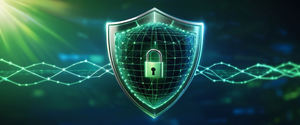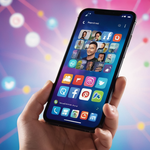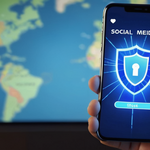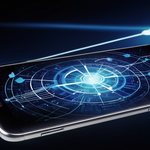
Virtual private networks (VPNs) have become increasingly critical tools for iPhone users seeking to protect their digital privacy and enhance their security while conducting online activities. A VPN on an iPhone functions as a sophisticated software layer that encrypts internet traffic and routes all device communications through secure remote servers, effectively cloaking the user’s IP address, location, device identifiers, and online activity from external observation. This technology enables users to protect their online privacy, bypass internet censorship, and access geographically restricted content while maintaining secure connections even on unsecured public Wi-Fi networks. However, despite widespread advocacy for VPN adoption, the reality of VPN technology for iPhone users involves nuanced considerations regarding security architecture, privacy implications, speed impacts, and the growing ecosystem of both reputable and potentially problematic VPN applications. This report provides a comprehensive examination of VPN technology specifically as it applies to iPhone users, exploring the underlying mechanisms, practical applications, implementation methods, provider evaluation criteria, and critical considerations that determine whether VPN usage represents a genuine security enhancement or potentially introduces new vulnerability vectors for individual and organizational mobile security strategies.
Understanding the Fundamental Architecture and Mechanics of Virtual Private Networks
A virtual private network represents a sophisticated approach to internet security and privacy that has evolved significantly since its original conception as a tool for corporate remote access. At its core, a VPN is fundamentally a Software as a Service (SaaS) product that encrypts online activity, adding a protective layer of encryption around anything being transmitted through your iPhone’s internet connection. The primary mechanism through which VPNs achieve this protection involves establishing an encrypted tunnel between the user’s device and a remote server controlled by the VPN service provider, with this tunnel effectively masking online activities and making it exceptionally difficult for third parties such as hackers, Internet Service Providers (ISPs), or government agencies to monitor internet traffic.
The encryption that forms the cornerstone of VPN technology operates through sophisticated cryptographic algorithms that transform data into an unreadable format called ciphertext, which can only be deciphered by someone possessing the appropriate decryption key. Common encryption standards employed by VPN services include Advanced Encryption Standard (AES) with 128-bit or 256-bit keys, with 256-bit encryption representing the minimum security threshold that industry experts consider genuinely secure. This encryption process occurs before data leaves the user’s device, ensuring that the information remains protected throughout its journey across the internet infrastructure.
Beyond encryption, VPNs employ a process called tunneling, which encapsulates user data within another set of data packets that are then transmitted through the encrypted connection. This dual-layered approach ensures that even if the outer layer of protection is intercepted, the inner data remains secure and inaccessible without the proper decryption key. The tunnel itself runs from the user’s iPhone to the VPN server, which acts as a proxy and forwards data to its final destination on the internet, effectively creating an intermediary between the user and the websites or services they visit.
The efficiency and security of a VPN connection depend substantially on the protocol it uses, with VPN protocols representing sets of rules that govern how data is encrypted and transmitted over the network. iPhone and Apple’s broader ecosystem support multiple VPN protocols, including IKEv2/IPsec with various authentication methods such as shared secrets, RSA certificates, and Elliptic Curve Digital Signature Algorithm (ECDSA) certificates. Additionally, iOS devices support L2TP/IPsec with user authentication through MS-CHAP v2 passwords, two-factor tokens, or certificates, as well as SSL-VPN through appropriate client applications downloaded from the App Store. The protocol choice significantly affects both the speed of connections and the level of security achieved, with modern protocols like WireGuard demonstrating substantial improvements in both performance and cryptographic strength compared to older alternatives.
The Specific Implementation of VPN Technology Within iPhone’s Operating System
The manner in which VPNs function on the iPhone differs from traditional desktop implementations, requiring understanding of how iOS architecture interfaces with VPN protocols and network traffic routing. When an iPhone user activates a VPN, the iPhone’s operating system establishes a direct connection to a VPN server, encrypting all of the device’s digital traffic and thereby protecting the user’s activity and details throughout the connection process. Essentially, the VPN service sends all of the iPhone’s internet traffic through remote servers, which are typically located in different geographic regions around the world, while simultaneously hiding the device’s real Internet Protocol (IP) address and replacing it with that of the VPN service’s servers.
This process produces several immediate effects on the user’s network presence and data security profile. First, the connection becomes secure through the establishment of the encrypted tunnel between device and server. Second, the device’s actual location becomes hidden from external observation, as the IP address revealing geographic information is masked by the VPN server’s IP address. Third, hackers or Internet Service Providers cannot monitor activity over the connection or access any data transmitted through it, as all traffic has been encrypted before leaving the device. The user’s genuine IP address represents a critical identifier that reveals approximate location information through geolocation databases, and by masking this identifier, VPNs prevent websites, applications, and network operators from building comprehensive profiles of user location patterns.
Apple has integrated VPN support into iOS through multiple mechanisms, providing both third-party VPN app integration and native VPN configuration capabilities built directly into the operating system. iPhone users can connect to VPNs through dedicated applications downloaded from the App Store, which provide user-friendly interfaces and automatic connection management, or through manual configuration using the iOS settings interface where users input specific VPN server details, authentication credentials, and protocol preferences. For enterprise environments, Apple has implemented sophisticated VPN deployment options including VPN On Demand, which automatically establishes VPN connections under specified network conditions without requiring user interaction, and Always On VPN, which continuously tunnels all device traffic through a corporate VPN server for organizations requiring comprehensive network access control.
The technical sophistication of Apple’s VPN implementation extends to support for specialized enterprise configurations. Per-app VPN functionality enables organizations to specify which individual applications should route their traffic through VPN connections, allowing separation of corporate data flows from personal application data. This granular control permits organizations to ensure that sensitive business data always transits through secure corporate networks while allowing personal applications to function normally without VPN overhead. Split tunneling capabilities provide additional flexibility by allowing users to specify which network traffic passes through the VPN tunnel and which traffic routes directly to its destination, creating more efficient network utilization in scenarios where all traffic protection is unnecessary.
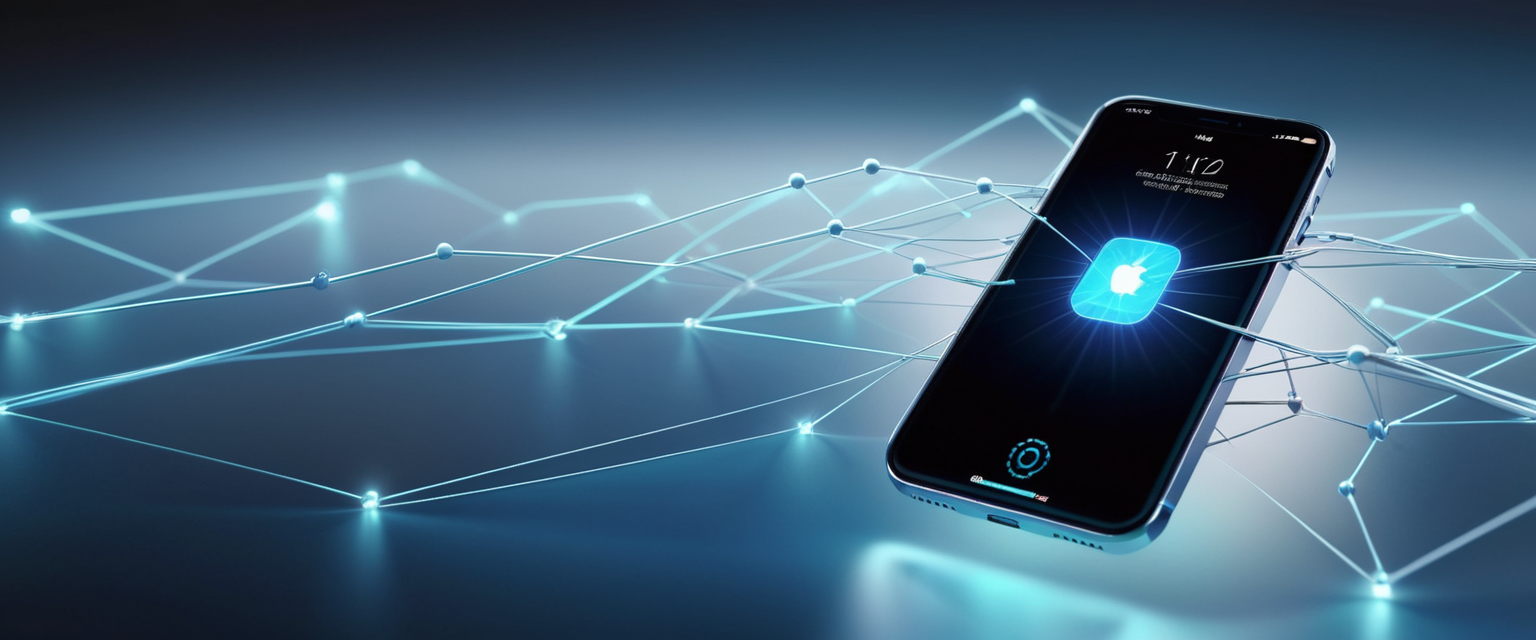
The Practical Benefits and Real-World Use Cases for VPN Implementation on iPhone
iPhone users encounter numerous legitimate scenarios where VPN protection provides demonstrable security and privacy benefits, though the magnitude of these benefits varies substantially depending on the specific usage context and the robustness of the VPN provider. The most commonly cited application of VPNs involves protecting data transmitted over unsecured public Wi-Fi networks, which remains a legitimate vulnerability vector despite overall improvements in web security through HTTPS adoption. Public Wi-Fi networks found in cafes, hotels, airports, and restaurants frequently operate with minimal security infrastructure, leaving connected devices vulnerable to various attack vectors including packet sniffing, man-in-the-middle attacks, and DNS hijacking.
When connecting to public Wi-Fi without VPN protection, other users on the same network or network administrators with malicious intent can potentially intercept data traffic, particularly if that traffic utilizes unencrypted protocols or if users visit websites that still employ HTTP rather than HTTPS encryption. Although HTTPS encryption now protects most web traffic to major websites, VPNs provide additional protection by encrypting DNS requests themselves, preventing observation of which domains users attempt to access even if the website content remains HTTPS-protected. Additionally, while HTTPS protects website traffic, VPNs protect traffic from applications that may not implement HTTPS, including legacy protocols, IoT device communications, and email protocols that may not maintain proper encryption.
Beyond public Wi-Fi protection, VPNs enable users to bypass geographic restrictions and access content that might be restricted in their current location. Many streaming services, including Netflix, BBC iPlayer, and other content platforms, restrict access based on the user’s apparent geographic location as determined by IP address, implementing these restrictions due to licensing agreements that limit content distribution to specific countries. A VPN allows users to connect to servers in countries where such content remains available, effectively appearing to be located in that country and gaining access to region-restricted content libraries. Similarly, VPNs enable users to circumvent censorship in countries with restrictive internet policies, allowing access to social media platforms, news services, and information sources that governments attempt to block.
From a privacy perspective, VPNs reduce the ability of advertisers and data brokers to construct detailed profiles of user browsing behavior by masking the IP address used to identify users across websites. Without VPN protection, advertisers and ISPs can observe the websites a user visits by monitoring DNS requests and network traffic, and this information becomes valuable for building comprehensive behavioral profiles used in targeted advertising campaigns. While VPNs do not completely prevent tracking through other mechanisms such as cookies, browser fingerprinting, and device identifiers, they do eliminate IP-based tracking and prevent ISPs from selling browsing history to third parties. For users concerned about ISP-level surveillance and behavioral tracking, VPN protection represents a practical countermeasure to this form of data collection and monetization.
Remote access to corporate resources represents another significant use case, particularly as mobile work becomes increasingly prevalent. VPNs enable remote workers to securely access company networks, internal applications, email systems, and sensitive data from remote locations without exposing this traffic to potential interception. This functionality becomes especially critical when remote workers utilize unsecured home networks or must work from various locations, as the VPN encryption protects corporate data regardless of the quality of the local network infrastructure.
The Process of Setting Up, Configuring, and Managing VPN Connections on iPhone
iPhone users can establish VPN connections through multiple methods, each offering different levels of convenience and control, and the selection of method depends on whether the user intends to use a commercial VPN service or connect to a specific organizational network. The most straightforward approach for most users involves downloading a dedicated VPN application from the Apple App Store, which provides a simplified user interface and handles much of the technical configuration automatically. To utilize this method, users open the App Store application, search for a specific VPN provider or search generically for VPN applications, identify a suitable option, tap the download button, and install the application to their iPhone.
Once a VPN application has been installed, the user opens the application and typically creates an account or logs into existing credentials, after which the application usually prompts the user to grant necessary permissions for VPN functionality. The application requests permission to add VPN configurations to the device, which the user must approve through entering their iPhone passcode or using Face ID authentication. Most VPN applications feature a prominent connection button or toggle switch that establishes the VPN connection with a single tap, with the application typically auto-selecting the fastest available server or allowing users to manually choose specific server locations based on their needs.
For users with more sophisticated requirements or those implementing organizational VPN policies, manual VPN configuration through the iPhone settings interface provides granular control over connection parameters. This process requires navigating to Settings, selecting General, locating VPN & Device Management, tapping VPN, and choosing Add VPN Configuration. The user then selects the VPN protocol to employ, with IKEv2 representing the most modern and recommended option for most scenarios, though L2TP/IPsec offers compatibility with older VPN infrastructure. The configuration screen requires entry of specific details provided by the VPN operator or network administrator, including the server address or hostname, remote ID for authentication purposes, username for account access, and password or certificate-based authentication credentials.
The manual configuration process also allows specification of proxy settings if required by the network infrastructure, selection of additional authentication methods including EAP-based protocols, and configuration of advanced options such as split tunneling parameters. Once all required information has been entered correctly, the user taps Done to save the configuration, which then appears in the VPN settings list. Connecting to a manually configured VPN involves navigating to Settings, finding the VPN entry in the main settings menu, tapping the toggle switch to enable the connection, and entering any required authentication credentials if the configuration does not store them securely.
Once a VPN connection has been established, a small VPN icon typically appears in the iPhone’s status bar at the top of the screen, providing visual confirmation that all network traffic is being routed through the VPN tunnel. The presence of this indicator helps users remember that their connection remains protected and serves as a reminder that all data transmission, including in background applications, now routes through the VPN infrastructure. Disconnecting from a VPN can be accomplished through opening the VPN application and selecting disconnect, or through the iPhone settings interface by tapping the VPN toggle switch to turn it off. Some VPN applications include advanced features such as automatic reconnection if the VPN connection drops unexpectedly, kill switch functionality that terminates internet access if the VPN connection fails, and automatic connection when joining unsecured Wi-Fi networks.
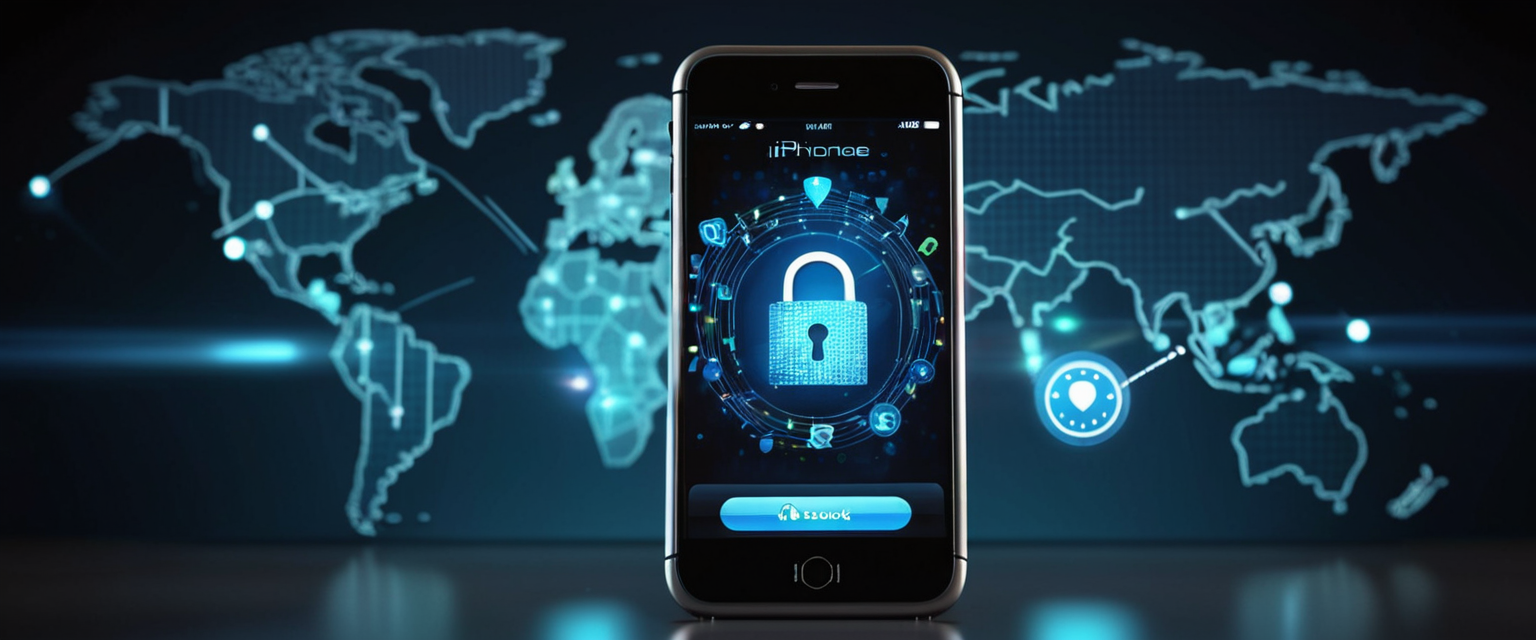
Evaluating VPN Providers and Establishing Selection Criteria for iPhone Users
The VPN market encompasses a bewildering array of providers with vastly different quality levels, security implementations, and privacy practices, making informed provider selection essential for users seeking genuine protection rather than false security theater. Not all VPNs prove created equal, as services differ dramatically in their quality and functionality, and perhaps most critically, in how they handle user data. Establishing clear evaluation criteria before committing to a VPN service helps users avoid the numerous low-quality or potentially malicious providers that inhabit the market.
Connection security represents the most fundamental criterion for VPN evaluation, requiring users to examine what encryption method the VPN provider employs and ensuring that the provider meets minimum security standards. The encryption standard should be no less than 256-bit encryption, which industry experts widely recognize as providing adequate protection against current cryptographic attacks. Users should research whether the provider implements modern encryption algorithms such as AES-256 or ChaCha20, as older encryption methods may contain known vulnerabilities that sophisticated attackers could potentially exploit.
Activity logging practices constitute another critical evaluation dimension, as some VPN providers claim to offer privacy protection while simultaneously logging comprehensive records of user activity. Users should thoroughly read the provider’s terms of service and privacy policies to determine whether the provider tracks or logs user activity, and more specifically, whether they maintain records of browsing history, IP addresses used, websites visited, files downloaded, or metadata about user behavior. The most trustworthy VPN providers implement strict no-logs policies audited by independent third parties, which provides external verification that the provider truly maintains no records of user activity. Several VPN providers including NordVPN, Surfshark, Proton VPN, and ExpressVPN have undergone third-party audits verifying their no-logs claims, providing users with objective evidence of their privacy commitments.
Monetization model analysis reveals how a VPN provider sustains operations and generates revenue, which provides insight into potential conflicts of interest regarding user privacy. VPN providers that charge no subscription fee face economic pressure to monetize their service through alternative means, most commonly by selling user information to third parties for advertising purposes. This business model directly contradicts the stated privacy protection mission, meaning free VPN users ultimately trade their data privacy for free service access. Research has documented that many free VPN providers engage in exactly this behavior, including notorious cases where established security companies like Avast were discovered selling browsing data of their VPN users to third parties. Paid VPN services that charge modest monthly subscriptions have significantly stronger economic incentives to maintain user privacy, as their revenue derives directly from user subscriptions rather than from monetizing user data.
Connection speed and performance directly impact the user experience and determine whether a VPN service remains practical for everyday use. The encryption and rerouting processes inherent to VPN operation introduce some performance overhead, with users typically experiencing modest speed reductions of 10-30 percent when connected to nearby VPN servers. However, many users report negligible speed impacts when using modern VPN protocols like WireGuard or NordVPN’s NordLynx implementation, which achieves download speeds exceeding 890 megabits per second in testing scenarios. Users should verify performance through trial periods that most reputable VPN providers offer, testing the service on their specific internet connection to determine whether speed impacts remain acceptable for their use cases.
Usage caps and data limitations distinguish between VPN providers, particularly in the free tier versus paid tier distinctions. Some providers implement daily or monthly data limits, restricting free users to specific amounts of data transfer before requiring payment or waiting until the next billing cycle. Users should carefully review whether these limits prove acceptable for their expected usage patterns, as streaming video or large file transfers can quickly exhaust limited data allowances. Premium VPN services typically offer unlimited data usage, allowing continuous protection without worrying about approaching any artificial limits.
Premium VPN providers suitable for iPhone users include NordVPN, which offers industry-leading speeds through its proprietary NordLynx protocol implementation, operates a verified no-logs policy audited multiple times by independent firms, and provides comprehensive security features through its Threat Protection system. Surfshark distinguishes itself through offering unlimited simultaneous connections allowing one subscription to protect multiple devices, pricing that undercuts most competitors while maintaining strong security standards, and inclusion of advanced features like Double VPN that routes traffic through multiple servers for enhanced privacy. ExpressVPN maintains a strong reputation for reliability, has undergone third-party no-logs audits, and offers 24/7 customer support, though its pricing runs higher than some alternatives. For users with budget constraints, Proton VPN offers a free tier with no data limits and audited no-logs claims, though the free service includes limitations on server selection and simultaneous connections.
Examining Security Risks, Limitations, and Potential Drawbacks of VPN Usage on iPhone
Despite the legitimate security and privacy benefits that VPNs provide, the technology comes with significant limitations and potential drawbacks that users must understand before implementing VPN protection as part of their security strategy. A substantial body of research has documented that many free VPN applications, and to a lesser extent some paid VPN services, contain critical security flaws that actually increase user vulnerability rather than protecting privacy. A comprehensive study by Zimperium zLabs analyzing 800 free VPN applications for Android and iOS revealed disturbing security deficiencies including use of obsolete encryption libraries containing well-known vulnerabilities like the Heartbleed bug (CVE-2014-0160) from 2014.
The Heartbleed vulnerability in particular represents a catastrophic security flaw that could allow remote attackers to read sensitive information including secret keys, usernames, and passwords, yet researchers discovered that approximately three free VPN applications still contained this decade-old vulnerability with known fixes readily available. Additionally, roughly one percent of analyzed applications proved vulnerable to man-in-the-middle (MitM) attacks, potentially allowing attackers to intercept and read all user traffic, defeating the entire purpose of VPN protection. These findings demonstrate that the security of VPN applications themselves cannot be assumed, requiring users to carefully evaluate whether their chosen provider maintains rigorous security standards rather than simply assuming any VPN provides security benefits.
Many free VPN applications request permissions far exceeding their legitimate operational requirements, creating surveillance capabilities that contradict their stated privacy mission. Android VPN applications frequently request permissions including AUTHENTICATE_ACCOUNTS for system-level account management control, READ_LOGS for comprehensive device activity monitoring, and READ_CALL_LOG for access to telephone call records. On the iOS platform, over six percent of examined VPN applications requested private entitlements that grant deep access to the operating system’s internal components. These private entitlements theoretically allow applications to access private application programming interfaces (APIs), execute system-level commands, escalate privileges, and access sensitive data from other applications on the device.
iOS VPN applications also commonly request location tracking permissions with LOCATION_ALWAYS specified, requiring continuous tracking of user geographic position despite the fact that VPN functionality has no legitimate requirement to monitor location. Similarly, many request use of local network discovery capabilities (USE_LOCAL_NETWORK) that enable mapping of devices on local networks, capabilities with no connection to VPN functionality but substantial surveillance potential. Privacy policy non-compliance represents another serious concern, as research found that 25 percent of iOS VPN applications on Apple’s App Store lacked valid privacy manifests. This represents a failure to comply with Apple’s core privacy disclosure requirements intended to inform users about data collection practices, effectively preventing users from making informed decisions about whether to trust an application with their data.
The misalignment between VPN marketing claims and actual delivered privacy protection has become a pervasive problem in the VPN marketplace. Many VPN providers market their services as comprehensive privacy and security solutions capable of protecting users from all online threats, but this messaging misrepresents the actual security benefits provided. The reality involves a distinction between privacy and security that many users fail to recognize; while VPNs excel at providing privacy by preventing ISPs and network operators from observing user behavior, they do not meaningfully enhance security for most users’ everyday online activities. Modern HTTPS encryption has become ubiquitous on mainstream websites used for sensitive activities including banking, shopping, and email, and HTTPS provides encryption that is completely independent of VPN usage. Even when users access websites over unencrypted HTTP connections, the security benefits of adding VPN protection depend on the specific threat model, as VPNs primarily protect against network-level attackers while providing minimal protection against application-level attacks such as credential theft through phishing.
The performance impact of VPN usage remains a legitimate concern for many iPhone users, particularly those with limited data plans or who engage in bandwidth-intensive activities such as video streaming or online gaming. While modern VPN protocols have substantially reduced performance overhead, all VPN implementations introduce some latency and bandwidth inefficiency through the encryption and rerouting processes. The encryption itself requires computational resources that consume battery power, the rerouting adds distance to data transmission paths increasing latency, and the constant maintenance of VPN connections in the background consumes battery power even when users are not actively using the VPN. Research by ExpressVPN testing on iPhone 15 devices found that VPN usage reduced battery life by approximately 14 percentage points during video streaming over a 60-minute period compared to unconnected usage. While this represents a relatively modest impact, users who rely heavily on their iPhone batteries throughout the day may find this drawback significant.
Certain websites and applications actively block or restrict VPN traffic, recognizing VPN usage and refusing to serve content to users connected through VPN infrastructure. Streaming services including Netflix employ sophisticated VPN detection mechanisms that identify and block known VPN providers, limiting the utility of VPNs for accessing geo-restricted content. Some banking applications and payment services similarly restrict access from VPN-connected devices due to fraud prevention policies, forcing users to temporarily disable VPN protection to access legitimate services. This creates a usability challenge where the VPN protection intended to enhance security actually prevents legitimate access to desired services, requiring users to make frequent choices about when to sacrifice VPN protection for functionality.
The jurisdiction and regulatory environment in which a VPN provider operates significantly impacts both the reliability of privacy protections and the risk of government compulsion to disclose user information. Several countries including China, Russia, Belarus, Iran, and North Korea either ban VPNs entirely or severely restrict their usage to state-approved services only. Even in countries where VPNs remain technically legal, government pressure and surveillance laws create risks that VPN providers might be compelled to maintain logs of user activity or disclose user information to authorities. VPN providers based in countries with strict data retention laws and close relationships with government intelligence agencies face different pressure compared to providers in privacy-conscious jurisdictions like Switzerland or Panama.

Comparing VPN to Apple’s Built-In Privacy Features and Alternative Privacy Solutions
Apple has implemented several built-in privacy features that provide protection capabilities somewhat overlapping with VPN functionality, and understanding these alternatives helps users determine whether VPN usage represents the most appropriate privacy solution for their specific needs. iCloud Private Relay, available to iCloud+ subscribers since iOS 15.2, provides Safari-specific privacy protection that prevents websites and advertisers from seeing both a user’s real IP address and their browsing activity simultaneously. Unlike a traditional VPN that routes all traffic through a single server controlled by a VPN provider, iCloud Private Relay employs a dual-hop architecture where Apple first relays traffic through one server to encrypt and strip the user’s IP address, then relays it through another Relay provider’s server to decrypt the traffic and forward it to its destination.
The significant limitation of iCloud Private Relay involves its scope, as the protection applies only to Safari browsing activity and certain other Apple applications, leaving traffic from third-party applications, email clients, and non-Safari browsers completely unprotected. Additionally, iCloud Private Relay does not allow users to choose their apparent geographic location as traditional VPNs do, instead assigning a general location based on the user’s actual location, which prevents accessing geographically restricted content. For users whose primary concern involves Safari privacy while avoiding advertisers’ behavioral tracking, iCloud Private Relay provides acceptable protection without the speed overhead and battery impact of traditional VPNs. However, for users requiring protection across all applications and traffic types, or for accessing geographically restricted content, traditional VPNs provide more comprehensive functionality.
Tor (The Onion Router) represents an alternative privacy technology that focuses on anonymity rather than privacy, routing traffic through multiple volunteer-operated servers rather than a single VPN provider’s infrastructure. Tor provides significantly stronger anonymity than VPNs through its multi-hop architecture where each server in the path only knows partial information about the traffic path and cannot determine both the traffic source and destination. However, Tor trades this anonymity for substantially reduced performance, with typical Tor browsing speeds 5-10 times slower than unprotected browsing due to the multiple hops required. Additionally, Tor remains incompatible with Apple’s iOS platform, with Tor functionality only available through third-party Tor browser applications that leverage a limited implementation unsuitable for most users.
The most secure privacy configuration combines Tor with VPN through a “Tor over VPN” setup where users first establish a VPN connection and then access the Tor network, which provides the privacy advantages of a VPN (hiding Tor usage from ISPs through VPN encryption) while maintaining the anonymity advantages of Tor (multi-hop routing making traffic tracing extremely difficult). However, this approach remains technically challenging for most users and is not feasible on iPhone due to iOS restrictions on Tor browsers.
Synthesis of Findings and Recommendations for iPhone Users Considering VPN Implementation
The evidence examined in this comprehensive analysis reveals that VPNs represent powerful privacy protection tools with legitimate applications for certain user scenarios, but their benefits are substantially narrower than marketing claims typically suggest and their implementation requires careful provider selection to avoid actively harmful outcomes. For iPhone users specifically, the decision to implement VPN protection should be based on honest assessment of individual threat models and use cases rather than generalized assumptions that VPNs universally enhance security.
VPNs prove genuinely beneficial for iPhone users who regularly connect to untrusted public Wi-Fi networks in locations such as coffee shops, hotels, and airports where they conduct sensitive activities like accessing financial accounts or entering passwords. The encryption provided by VPNs protects against network-level attackers sharing the same Wi-Fi infrastructure from intercepting traffic, providing real protection against tangible threats in these scenarios. Similarly, users residing in countries with restrictive internet policies can legitimately benefit from VPNs to circumvent censorship and access information that their governments attempt to block.
However, iPhone users who primarily use their devices over their home Wi-Fi networks, connect infrequently to public Wi-Fi, and do not access geographically restricted content will likely derive minimal security or privacy benefit from VPN usage despite any perceived security enhancement. Their communications already benefit from HTTPS encryption on mainstream websites, and the additional privacy benefit of hiding their ISP-observable web traffic must be weighed against the battery impact, performance reduction, and potential incompatibility with certain applications.
For users deciding to implement VPN protection, selection of reputable providers becomes absolutely critical, as research has documented that many free VPN applications actually decrease security through their inclusion of vulnerable code libraries and excessive permission requests. Users should select from established providers with significant market presence, third-party audited no-logs policies, and transparent privacy practices, rather than selecting unknown or free VPN applications that may actively compromise security. Providers including NordVPN, Surfshark, Proton VPN, and ExpressVPN have demonstrated through both third-party audits and real-world events that they maintain meaningful privacy protections.
Organizations implementing bring-your-own-device (BYOD) policies should recognize that VPNs alone provide insufficient protection for corporate security and should be combined with comprehensive device management, identity verification, and access controls. The traditional remote access VPN model has become increasingly obsolete for modern distributed environments, with zero trust network access and software-defined perimeter architectures providing superior security properties.
Finally, iPhone users should recognize that VPNs represent only one component of a broader privacy and security strategy rather than a comprehensive solution capable of preventing all threats. VPNs do not protect against malware infections, phishing attacks, weak passwords, or insecure websites, and do not enable users to safely engage in illegal activities without legal consequences. Combined with other protective measures including strong authentication, secure password practices, regular software updates, and careful evaluation of application permissions, VPNs can meaningfully enhance privacy for appropriate use cases, but should never be viewed as a substitute for developing comprehensive security awareness and practices.
Protect Your Digital Life with Activate Security
Get 14 powerful security tools in one comprehensive suite. VPN, antivirus, password manager, dark web monitoring, and more.
Get Protected Now
